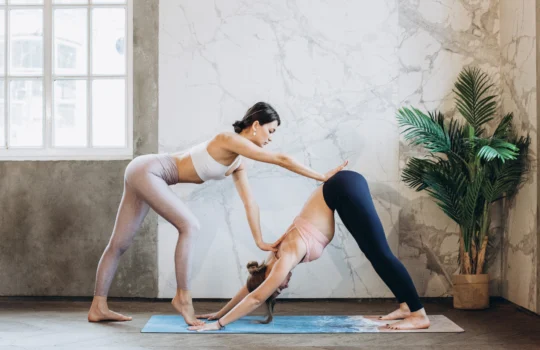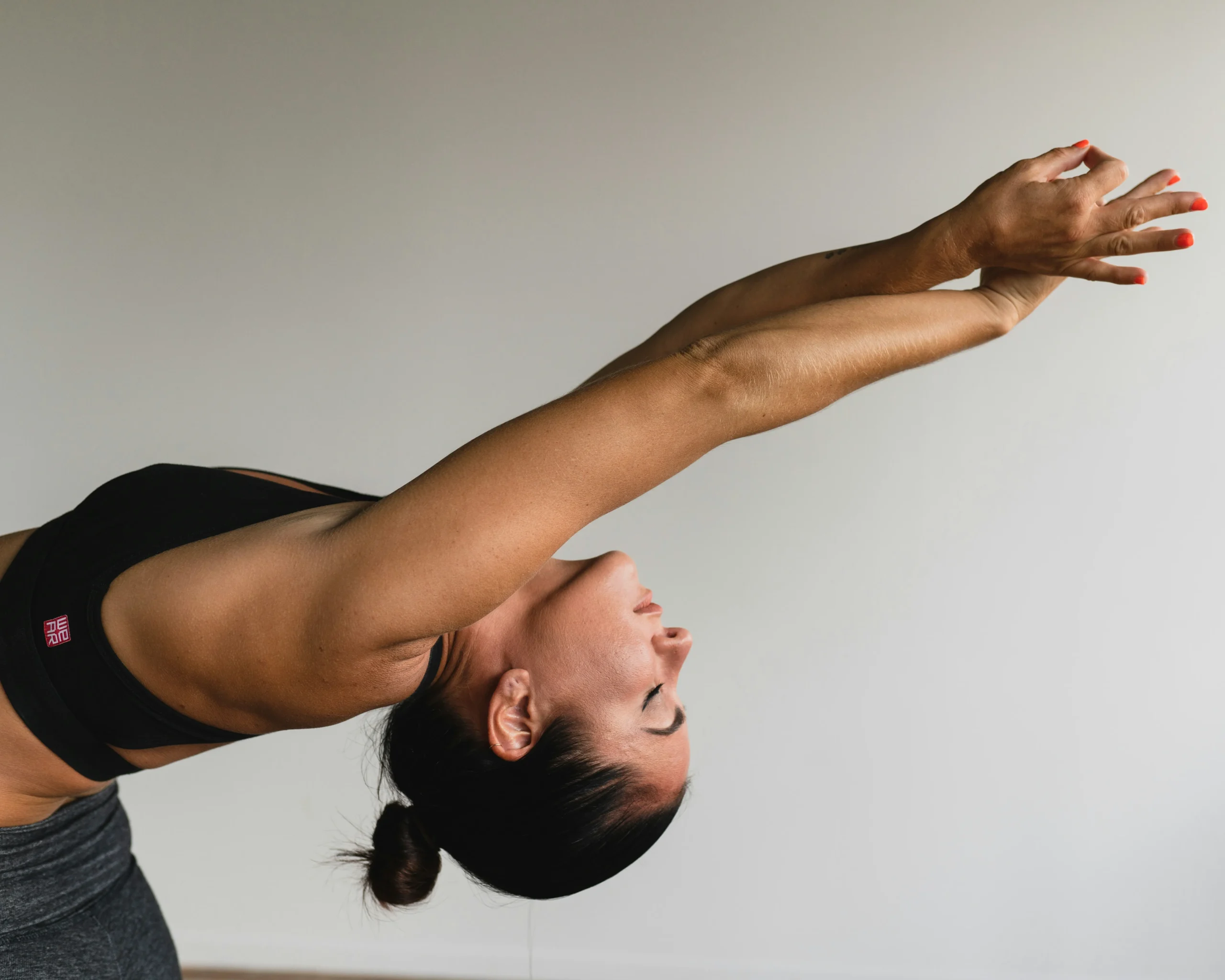Hey, sleepless squad! 🌙✨ Are you tired of tossing and turning every night, counting sheep like it’s your second job? We’ve got the ultimate solution to your nighttime woes: yoga for sleep! 🧘♀️✨
You heard it right! Yoga isn’t just for getting flexible and finding your zen in the middle of the day. It’s a magical remedy for drifting off into dreamland, too. Imagine ending your day with some peaceful, calming poses that melt away your stress and anxiety, prepping you for the best sleep ever. Intrigued? We thought so!
In this guide, we’re diving into the soothing world of yoga for sleep with seven easy-to-follow nighttime routines that you can try tonight. Yes, TONIGHT! Say goodbye to restless nights and hello to sweet, uninterrupted slumber. 😴💤 Let’s get stretching and snoozing, shall we?
Table of Contents
Benefits of Yoga for Sleep
Alright, sleepyheads! 😴✨ Let’s get into the juicy details of why yoga for sleep is the game-changer you’ve been dreaming about. Trust us, your future well-rested self will thank you!
1. Physical Relaxation
Ever feel like your muscles are still stuck in work mode even when you’re trying to hit the hay? Yoga to the rescue! Gentle stretching and restorative poses help release that pent-up tension in your body, easing you into a state of blissful relaxation.
2. Mental Calmness
Say goodbye to racing thoughts and hello to a peaceful mind. Yoga incorporates deep breathing and mindfulness, which are perfect for calming your brain and shutting down that endless to-do list running through your head. 🧠💤
3. Stress and Anxiety Reduction
Yoga is like a mini-vacation for your mind and body. It lowers cortisol levels (that pesky stress hormone) and helps you unwind after a hectic day. Imagine sliding into bed feeling zen and serene, instead of frazzled and fraught. Sounds heavenly, right? 🧘♀️🌙
4. Improved Sleep Quality and Duration
Consistency is key! Regularly practicing yoga before bed can help regulate your sleep patterns, making it easier to fall asleep and stay asleep. It’s like giving your sleep cycle a VIP upgrade. 🌟
5. Enhanced Overall Well-Being
Yoga doesn’t just stop at improving sleep; it boosts your overall health. Better sleep means better mood, more energy, and a sharper mind during the day. It’s a win-win-win! 🎉
So, why not give yoga for sleep a try tonight? You’ve got nothing to lose except those restless nights. Ready to drift off into dreamland? Let’s do this! 🌜✨
How Yoga Prepares the Body for Sleep

Hey, night owls and insomniacs! 🌜✨ Ready to discover how yoga for sleep works its magic on your body and mind? Let’s dive into the soothing science behind these dreamy poses.
1. The Impact on the Nervous System
Yoga is like a calming lullaby for your nervous system. By focusing on deep, mindful breathing and gentle movements, yoga activates your parasympathetic nervous system (a.k.a. the “rest and digest” system). This helps to lower your heart rate and blood pressure, setting the perfect stage for a restful night’s sleep. 🧘♂️💤
2. Reducing Cortisol Levels
Say goodbye to stress-induced insomnia! Yoga helps reduce cortisol levels—the stress hormone that keeps you wired and awake. Through a series of relaxing poses and mindful breathing, yoga melts away the day’s stress, leaving you calm and ready for bed. It’s like flipping a switch from chaos to calm. 🧘♀️🌿
3. Promoting Relaxation and Readiness for Sleep
Yoga routines before bed are designed to gently stretch and relax your muscles. This physical release signals to your body that it’s time to wind down. By incorporating poses that focus on relaxation, such as Child’s Pose and Legs Up the Wall, yoga helps to ease muscle tension and promote a sense of tranquility. 🌙✨
4. Enhancing Melatonin Production
Yoga practices, especially those that include meditation and deep breathing, can boost the production of melatonin—the hormone responsible for regulating sleep. By practicing yoga, you’re essentially giving your body a natural nudge to produce more of this sleep-inducing hormone, making it easier to drift off into dreamland. 💤💫
5. Balancing the Body’s Energy
Yoga helps balance your body’s energy by aligning your physical and mental states. The gentle, mindful movements of a bedtime yoga routine help to balance your energy levels, making you feel neither too wired nor too tired, but just right for a restful night. It’s like finding your perfect sleep sweet spot. 🧘♀️💤
So there you have it! The calming power of yoga for sleep lies in its ability to prepare both your body and mind for a restful slumber. Ready to roll out your mat and experience the magic? Sweet dreams await! 🌙✨
Creating the Ideal Environment for Nighttime Yoga

Alright, night-time yogis! 🌙✨ Before we dive into those dreamy yoga poses, let’s talk about setting the perfect stage for your yoga for sleep practice. Creating a calming environment is key to maximizing the benefits of your bedtime routine. Here’s how to set the scene for sweet, sweet slumber.
1. Setting Up a Calming Space
Your yoga space should be a sanctuary of peace and tranquility. Choose a quiet spot in your home where you won’t be disturbed. Clear away any clutter to create a clean, open area that invites relaxation. A tidy space equals a tidy mind! 🧘♀️✨
2. Importance of a Quiet, Dimly-Lit Room
Lighting plays a huge role in preparing your mind and body for sleep. Opt for soft, dim lighting—think fairy lights or a gentle lamp with a warm glow. This creates a soothing ambiance that signals to your brain it’s time to wind down. Bonus points if you can turn off harsh overhead lights! 🌜💡
3. Using Props for Comfort
Props are your best friends in nighttime yoga. Gather some comfy blankets, cushions, and a yoga mat to create a cozy setup. A bolster can provide extra support in restorative poses, while a blanket can keep you warm and comfy. These props help you fully relax into each pose without straining. 🧘♂️🛏️
4. Incorporating Essential Oils and Aromatherapy
Bring on the zen with some calming scents! Essential oils like lavender, chamomile, or sandalwood can enhance your relaxation experience. Use a diffuser, or place a few drops on your yoga mat or a cloth nearby. Aromatherapy can help lower stress levels and promote a sense of calm. 🌿💧
5. Playing Soothing Music or Nature Sounds
Set the mood with some soft, soothing music or nature sounds. Whether it’s the gentle rustle of leaves, the sound of waves, or a peaceful instrumental playlist, background sounds can help quiet your mind and enhance your relaxation. Keep the volume low and let the sounds wash over you. 🎶🌊
6. Maintaining a Comfortable Temperature
Make sure your space is at a comfortable temperature—not too hot and not too cold. A slightly cooler room is ideal for sleep, so adjust your thermostat or use a fan if needed. Being comfortable temperature-wise helps your body relax and prepares you for a good night’s sleep. 🌡️❄️
By creating the ideal environment for your yoga for sleep practice, you’re setting yourself up for success. A calm, inviting space makes it easier to unwind and fully immerse yourself in the relaxing benefits of yoga. Ready to roll out your mat and dive into dreamland? Let’s do this! 🌜✨
Yoga for Sleep: 7 Nighttime Routines to Try Tonight
Hey, sleepyheads! 😴✨ Ready to transform your bedtime routine and enjoy the best sleep of your life? We’ve got seven amazing yoga for sleep routines that are super easy to follow and perfect for winding down after a long day. Let’s dive into these dreamy sequences and get you snoozing in no time!
Routine 1: Gentle Stretching
Start your evening with some gentle stretches to release muscle tension and ease into relaxation.
- Child’s Pose (Balasana): Kneel on the floor, sit back on your heels, and stretch your arms forward, resting your forehead on the mat. Hold for 1-2 minutes.
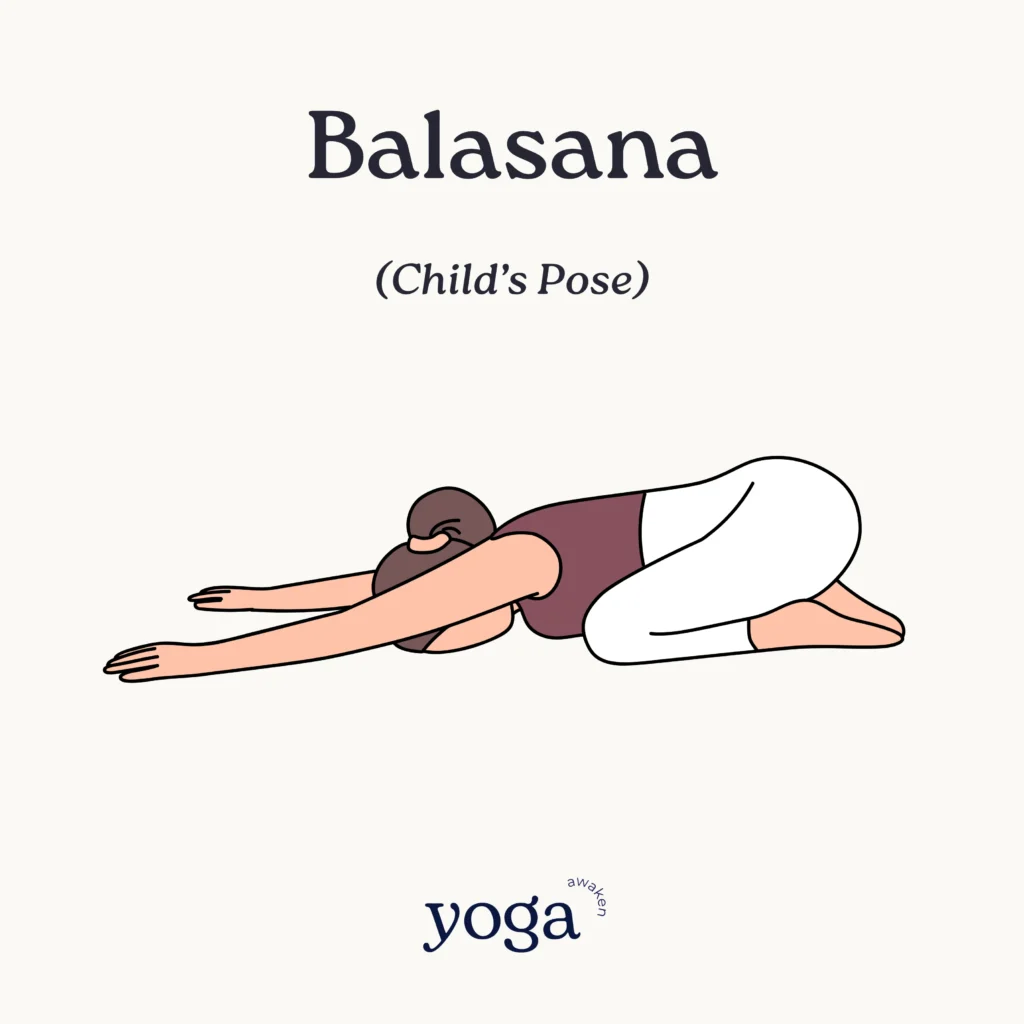
- Cat-Cow (Marjaryasana/Bitilasana): On all fours, alternate between arching your back (Cat) and dipping it (Cow). Repeat for 1-2 minutes.

- Standing Forward Bend (Uttanasana): Stand with feet hip-width apart, bend forward at the hips, and let your head hang. Hold for 1-2 minutes.
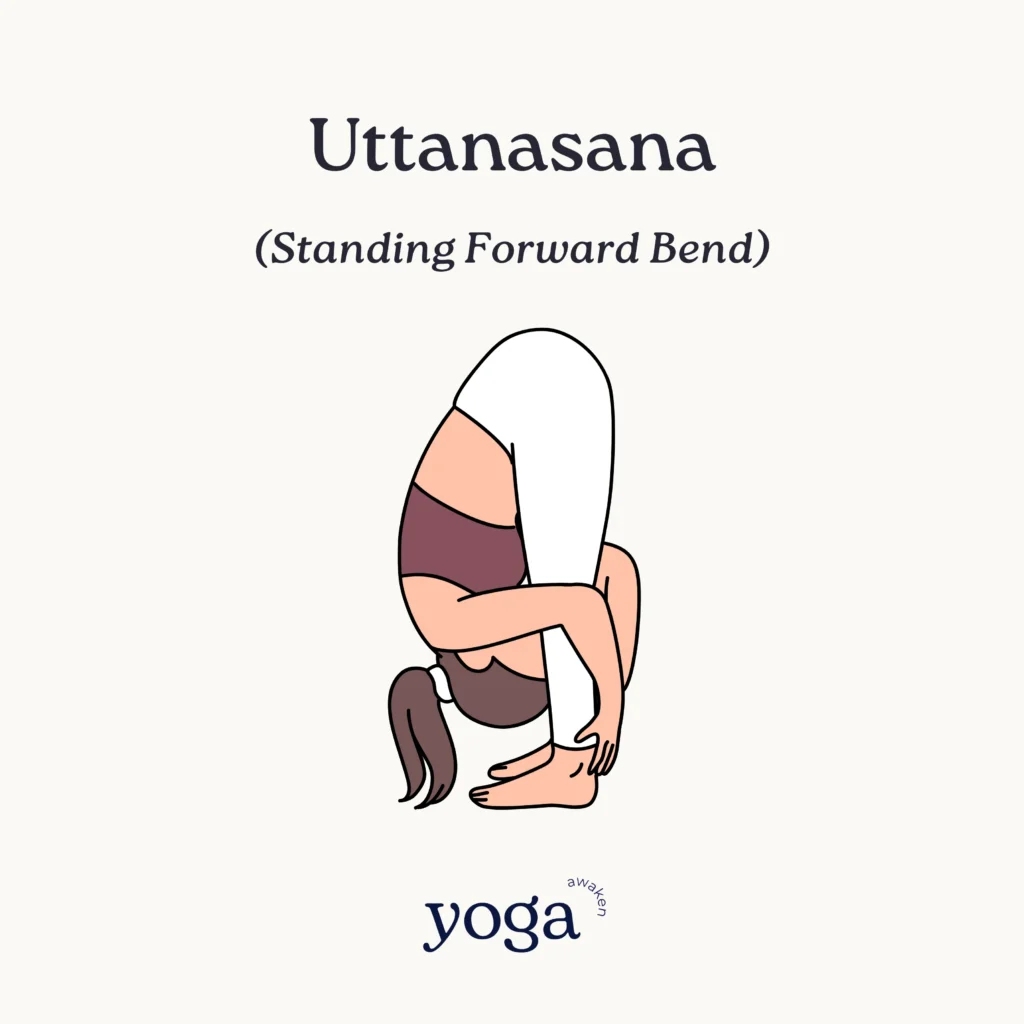
Routine 2: Deep Breathing and Relaxation
Focus on your breath to calm your mind and body.
- Reclining Bound Angle (Supta Baddha Konasana): Lie on your back, bring the soles of your feet together, and let your knees fall open. Place one hand on your heart and the other on your belly. Breathe deeply for 3-5 minutes.
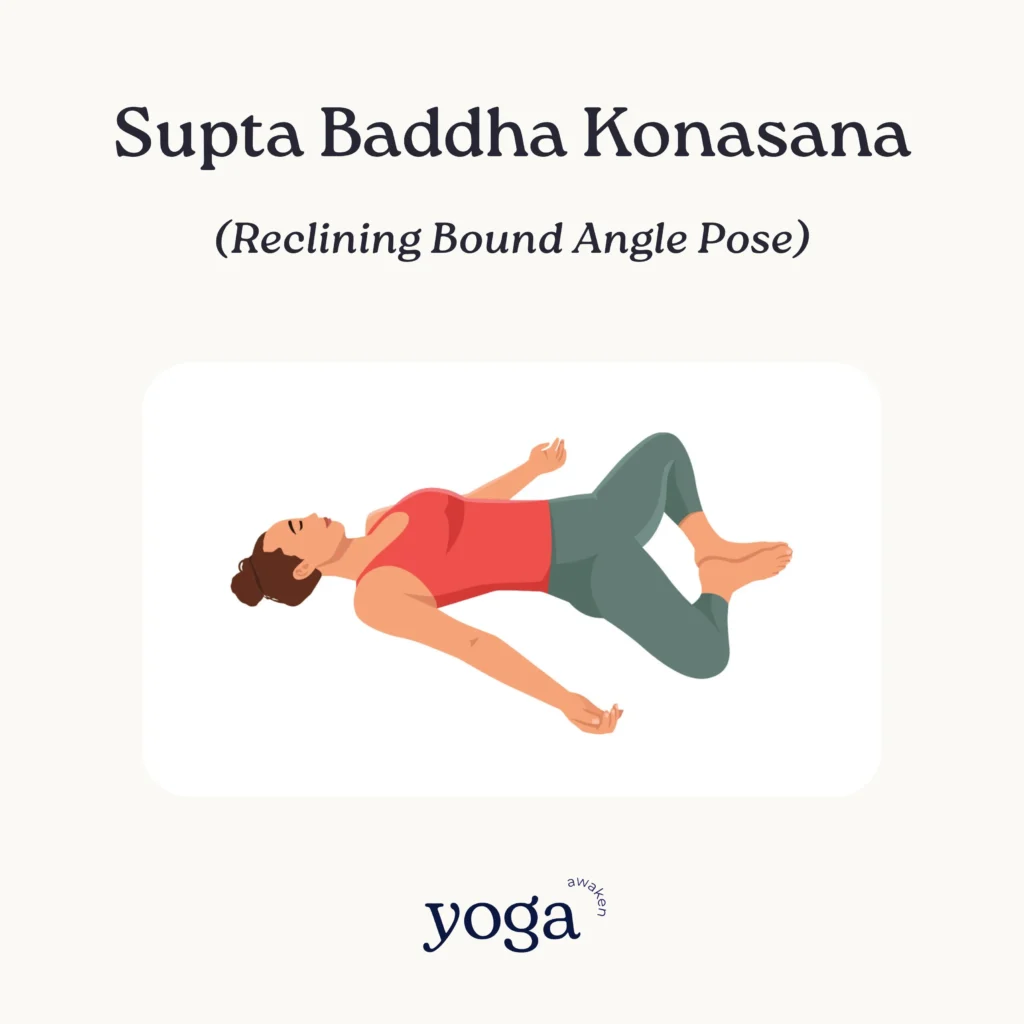
- Legs Up the Wall (Viparita Karani): Lie on your back with your legs extended up a wall. Rest your arms by your sides and breathe deeply for 5-10 minutes.
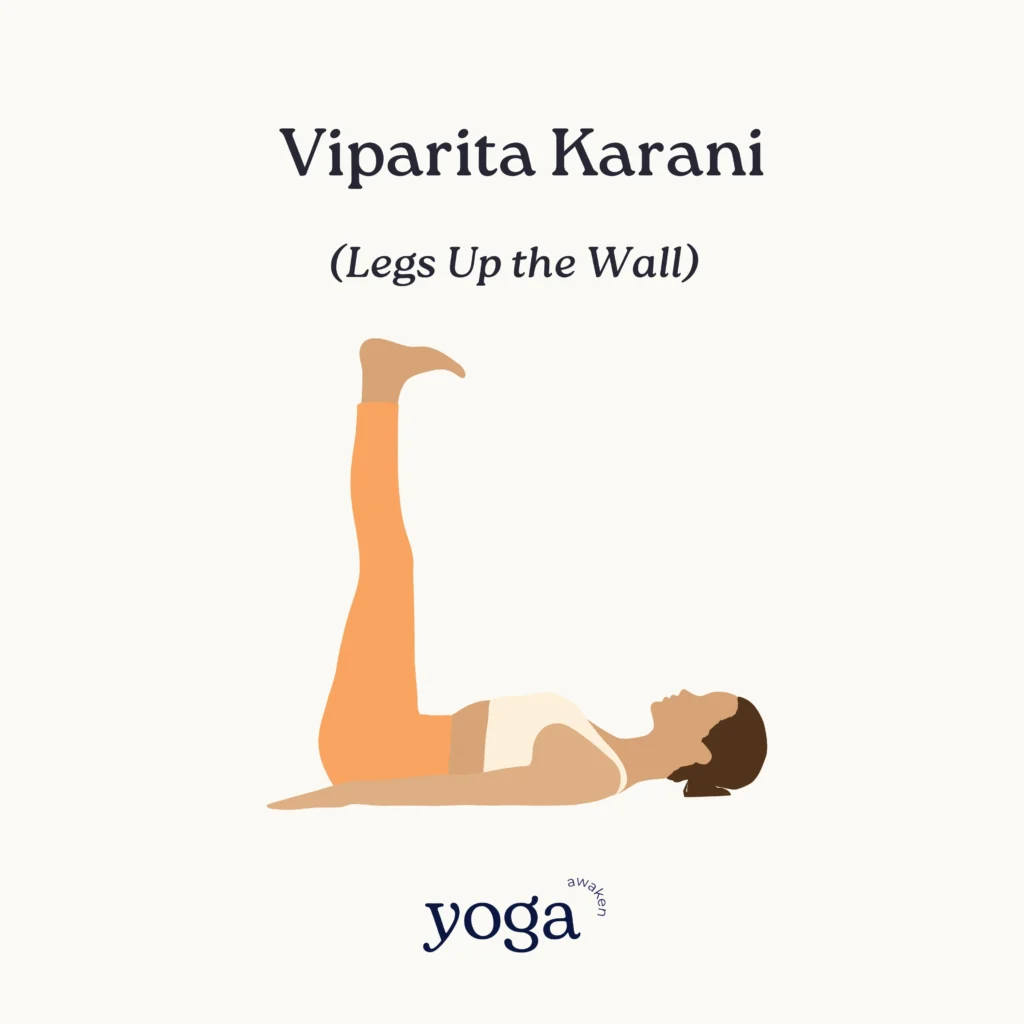
Routine 3: Restorative Yoga
Use props to fully relax and support your body.
- Supported Bridge (Setu Bandhasana): Lie on your back, place a block or cushion under your lower back, and let your hips rest on the support. Hold for 5 minutes.
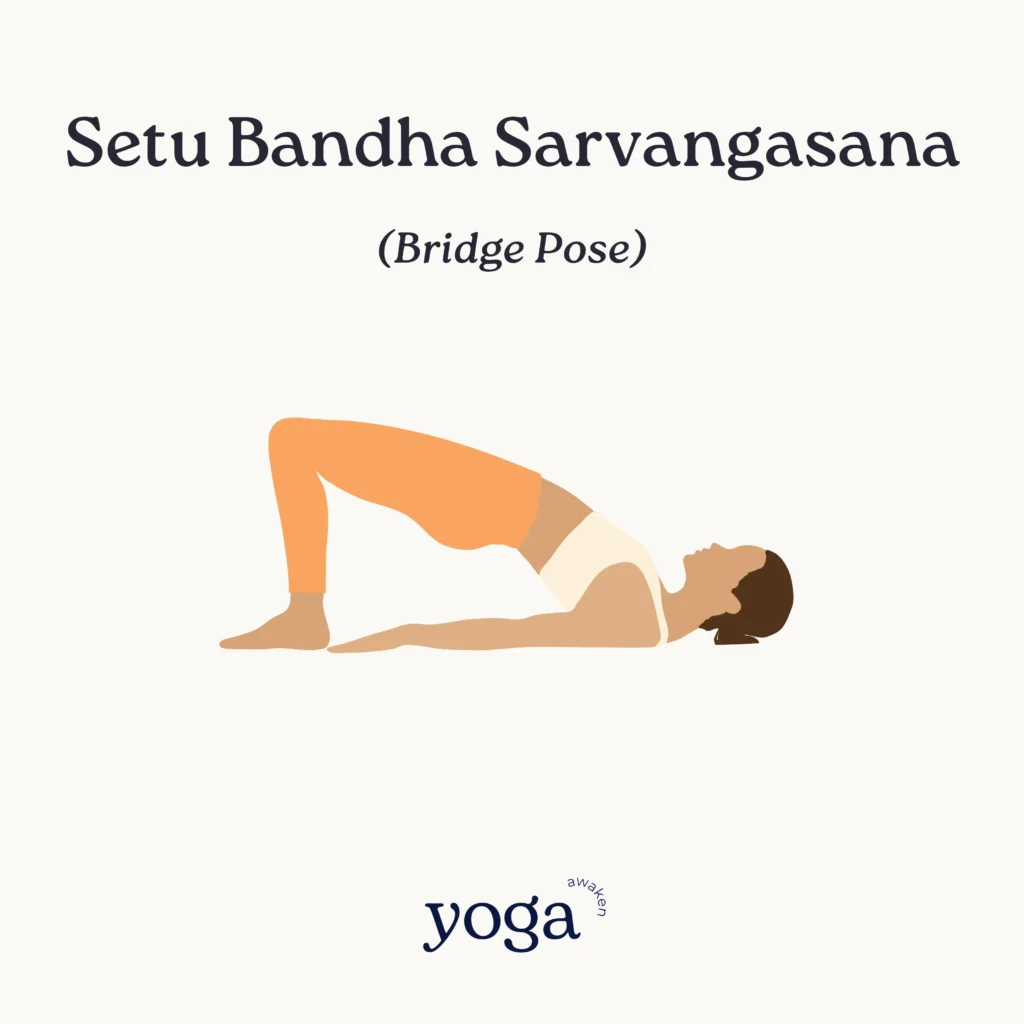
- Reclining Twist (Supta Matsyendrasana): Lie on your back, bend your knees, and let them fall to one side while keeping your shoulders on the mat. Hold for 3-5 minutes on each side.
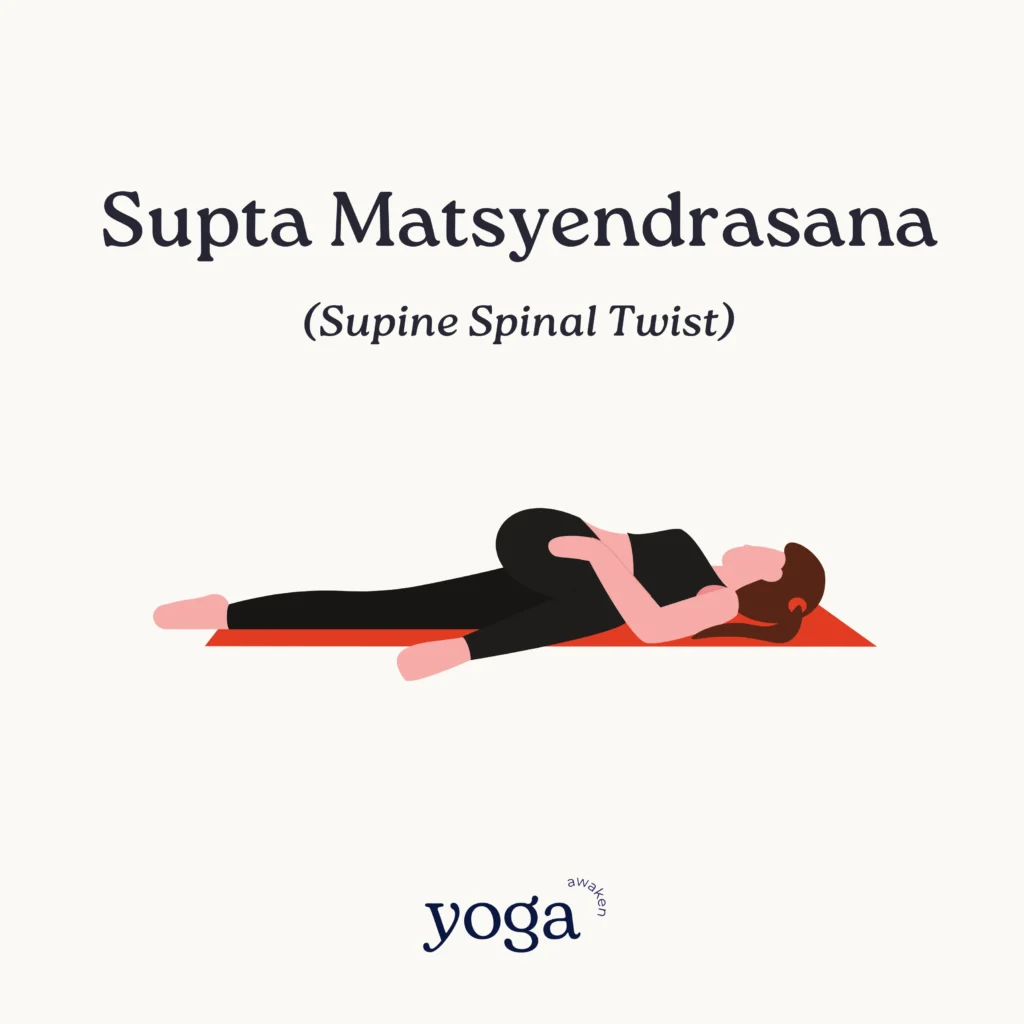
Routine 4: Yin Yoga for Sleep
Hold poses for longer to release deep tension.
- Butterfly Pose (Baddha Konasana): Sit with the soles of your feet together and knees open. Lean forward slightly and hold for 3-5 minutes.
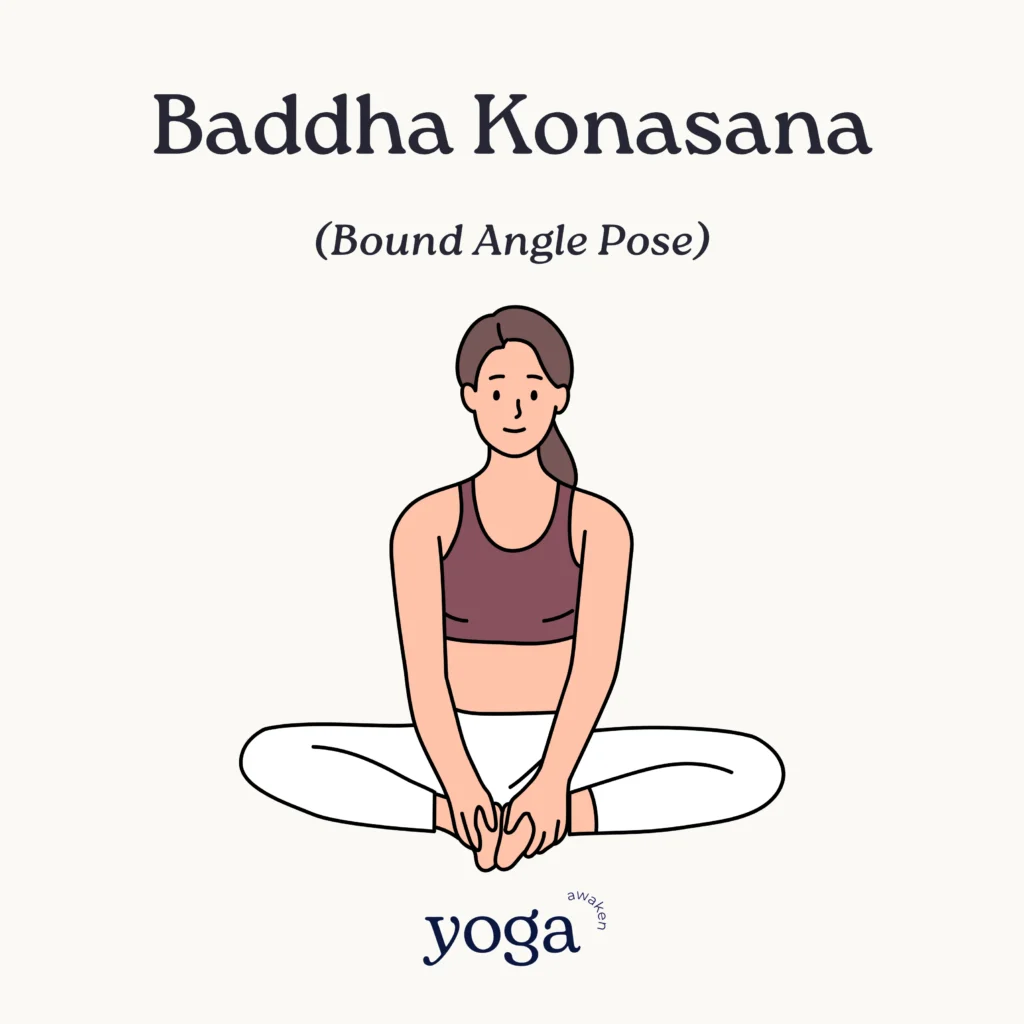
Routine 5: Yoga Nidra
A guided meditation practice for deep relaxation.
- Corpse Pose (Savasana): Lie flat on your back, legs slightly apart, arms by your sides with palms up. Close your eyes and follow a guided Yoga Nidra meditation for 10-20 minutes.
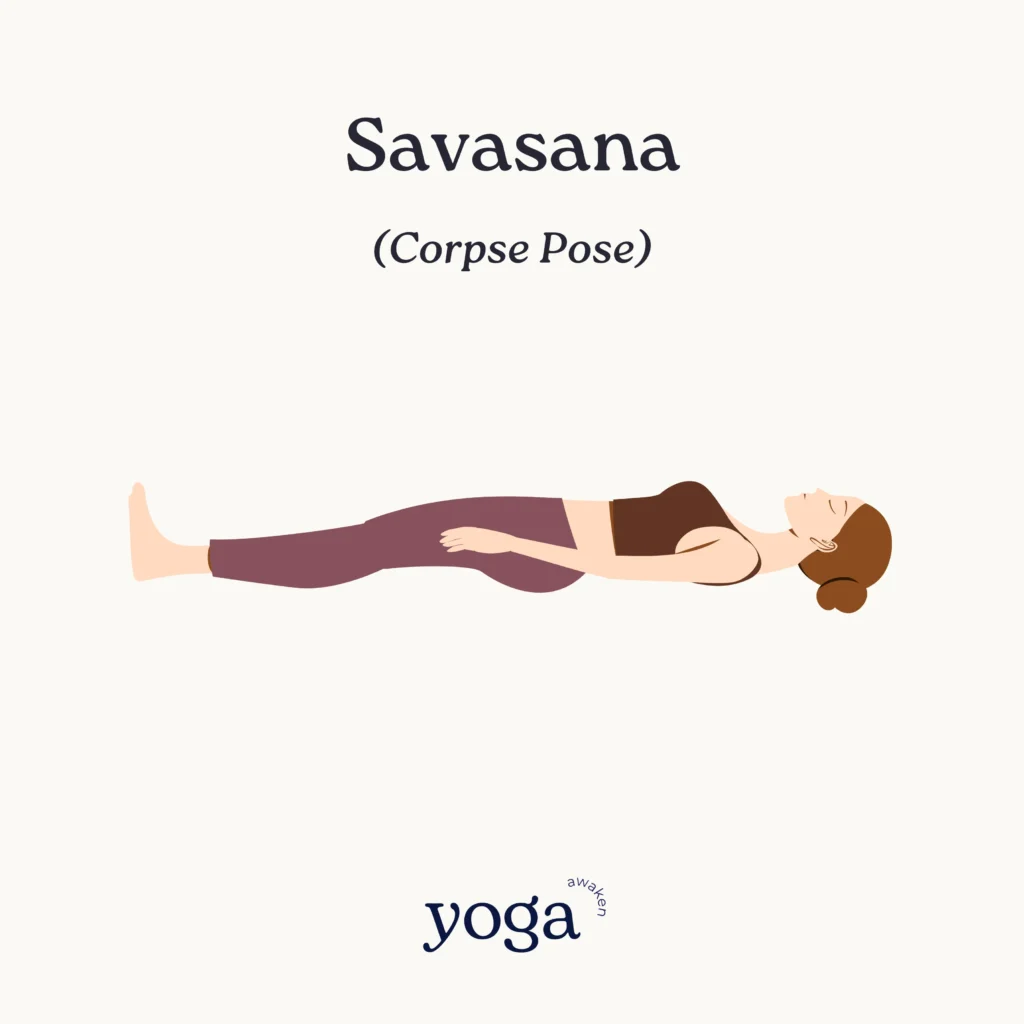
Read more about 7 Reasons Why Yoga Nidra is the Secret to Stress Relief.
Routine 6: Mindful Movement
Incorporate gentle movements to ease into relaxation.
- Mountain Pose (Tadasana): Stand tall with feet together, arms by your sides, and close your eyes. Focus on your breath and body awareness for 1-2 minutes.
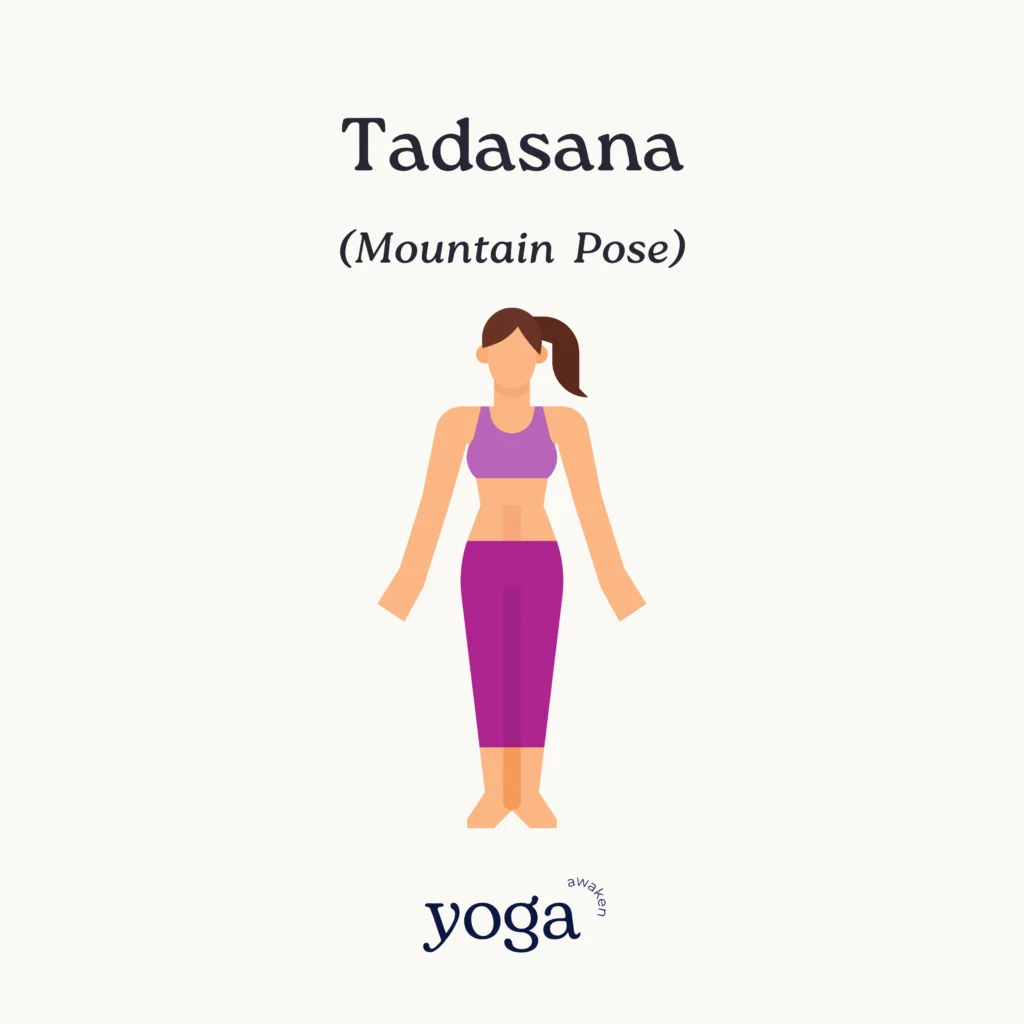
- Standing Forward Bend (Uttanasana): Repeat the forward bend, letting your head hang and relaxing your neck and shoulders. Hold for 1-2 minutes.

Routine 7: Visualization and Meditation
Combine yoga with visualization techniques for ultimate relaxation.
- Savasana with Visualization: Lie in Corpse Pose and imagine a peaceful place, like a beach or forest. Visualize yourself there, enjoying the tranquility. Hold for 5-10 minutes.
According to Harvard Health School, explore better sleep with more yoga poses.
Tips for a Successful Nighttime Yoga Routine
- Consistency is Key: Try to practice at the same time every night to create a habit.
- Combine with Other Rituals: Pair your yoga practice with other relaxing activities like reading or a warm bath.
- Listen to Your Body: Adjust the poses and duration as needed to suit your comfort level.
Incorporating Yoga into Your Sleep Hygiene
Hey, sleep seekers! 🌙✨ Ready to supercharge your bedtime routine with some zen vibes? Let’s talk about how you can seamlessly weave yoga for sleep into your nightly ritual for the best snooze ever.
Making Yoga a Part of Your Nightly Routine
Consistency is the secret sauce! Pick a specific time each night to roll out your mat and get your yoga on. Whether it’s right after dinner or just before you climb into bed, making yoga a regular part of your evening helps signal to your body that it’s time to wind down. 📅🧘♀️
Complementary Practices for a Holistic Approach

Yoga works wonders, but pairing it with other relaxing activities can take your sleep game to the next level. Here’s how to create a holistic bedtime ritual:
- Reading: A few pages of a good book can be the perfect wind-down after your yoga session. 📚
- Warm Bath: A soothing soak can relax your muscles and mind, making your yoga practice even more effective. 🛁
- Herbal Tea: Sip on some chamomile or lavender tea to enhance relaxation. ☕️
Combining Yoga with Sleep-Friendly Habits
Maximize the benefits of yoga for sleep by incorporating these sleep-friendly habits into your routine:
- Regular Sleep Schedule: Try to go to bed and wake up at the same time every day. This helps regulate your internal clock and improve sleep quality. ⏰
- Screen-Free Time: Avoid screens (phones, tablets, TVs) at least an hour before bed. The blue light can interfere with your ability to fall asleep. 📵
- Dark, Quiet Environment: Ensure your bedroom is dark and quiet. Use blackout curtains and earplugs if necessary. 🛏️
Tailoring Your Yoga Practice to Your Needs
Everyone’s body is different, so it’s important to listen to yours. Tailor your yoga for sleep practice to meet your specific needs:
- Short on Time?: Even a 10-minute routine can make a difference. Focus on a few key poses that help you relax the most.
- Feeling Extra Tense?: Spend more time on poses that target your tightest areas. For example, if your shoulders are tight, incorporate more shoulder stretches.
- Need More Calm?: Add a few extra minutes of meditation or deep breathing at the end of your practice.
Encouraging Consistency and Overcoming Obstacles
Sticking to a new routine can be challenging, but here are some tips to help you stay consistent:
- Set Reminders: Use your phone or a calendar to remind you to practice yoga each night. 📱🗓️
- Create a Dedicated Space: Having a specific spot for your yoga practice can make it easier to stick with it. 🧘♂️🏡
- Reward Yourself: Give yourself a small reward for maintaining your routine. This could be a new yoga accessory or a special treat. 🎁
Common Mistakes to Avoid
Alright, dream chasers! 🌙✨ As you embark on your journey to better sleep with yoga for sleep, it’s important to steer clear of a few common pitfalls. Here’s a heads-up on what to avoid to ensure you get the most out of your nighttime yoga practice.
Overdoing the Poses
Yoga for sleep is all about gentle relaxation, not an intense workout. Avoid vigorous or challenging poses that might overstimulate you and make it harder to wind down. Stick to gentle stretches and restorative poses that promote calmness. 🧘♀️✨
Skipping Relaxation and Meditation
Don’t rush through your routine! The relaxation and meditation parts are crucial for signaling to your body that it’s time to sleep. Make sure to dedicate time to these calming practices, such as Savasana or guided meditation, to fully reap the benefits. 🧘♂️🛌
Inconsistent Practice
Consistency is key to seeing results. Skipping your yoga practice or only doing it occasionally won’t yield the same benefits as a regular routine. Try to practice at the same time every night to create a habit and help regulate your sleep cycle. 📅🧘♀️
Ignoring Your Body’s Signals
Listen to your body and adjust your practice as needed. If a pose feels uncomfortable or causes pain, modify it or skip it altogether. The goal is to relax and prepare for sleep, not to push yourself too hard. 🧘♂️🚫
Not Creating the Right Environment
Your yoga practice should be in a calm, quiet, and dimly-lit space. Avoid practicing in a noisy or bright environment that could distract you or make it harder to relax. Set the scene for tranquility to enhance your yoga experience. 🌜💡
Conclusion
There you have it, sleep seekers! 🌙✨ By incorporating yoga for sleep into your nightly routine, you’re setting yourself up for restful, rejuvenating slumber. Remember, the key to success is consistency, creating the right environment, and listening to your body.
Avoid common mistakes like overdoing poses, skipping relaxation, and practicing inconsistently. Instead, embrace a gentle, calming routine that soothes your mind and body, helping you drift off into dreamland with ease. 🌜💤
Ready to transform your nights and wake up feeling refreshed and energized? Roll out your mat, follow these tips, and let yoga for sleep guide you to the best sleep of your life. Sweet dreams await! 🌙✨






